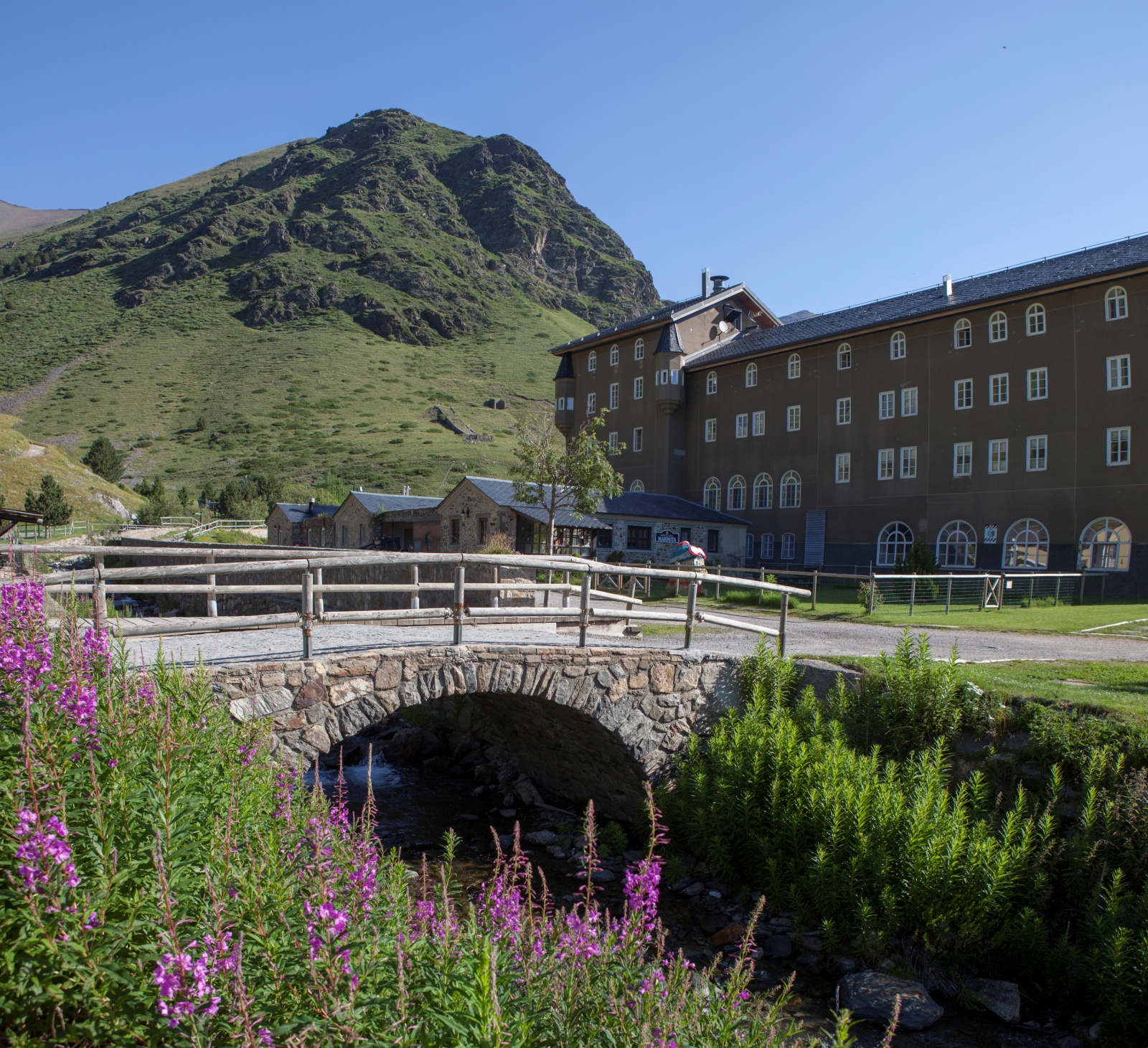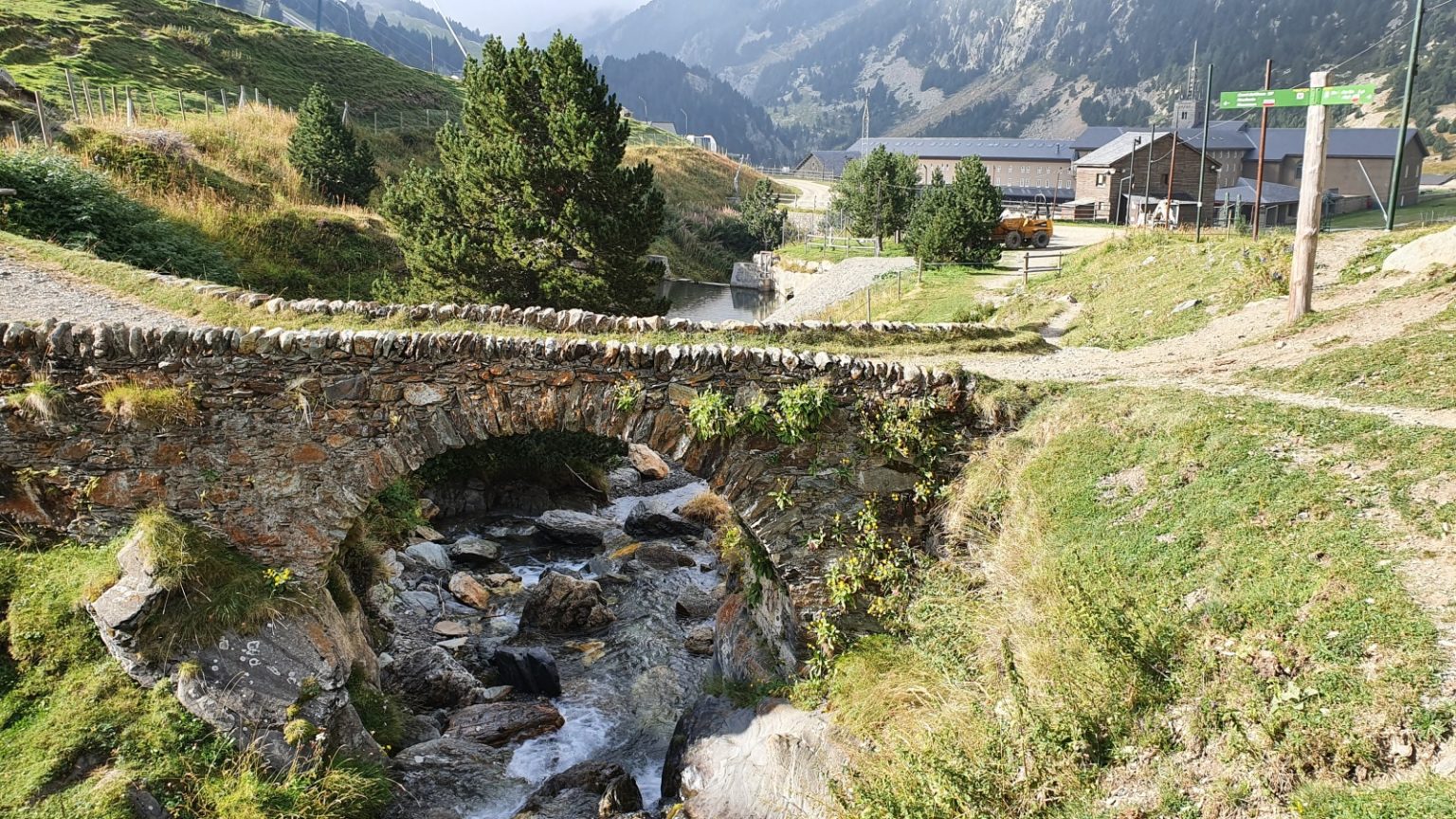

Blog

Journalist und Content Creator. Hat sich auf Tourismus und Sport spezialisiert.
Have you ever noticed that around the sanctuary there are several Romanesque bridges that cross the two streams that flow into Lake Núria?
How long has it been since you last visited Vall de Núria? Despite its already plentiful attractions, now you have another great reason to go and enjoy this wonderful natural space. Have you ever noticed the Romanesque bridges dotted along the two streams that flow into the Núria lake?
Well, now there is a new route that links them, giving you the perfect opportunity to tour them all and discover the historical and cultural heritage of the valley, while also setting you an additional challenge. Along with photos of the bridges from days gone by and a note about their history, the route also provides some extra family fun in the form of a puzzle trail to follow and solve as you visit each site. You need to read the information and explore your surroundings in order to solve the final puzzle. Fancy giving it a try?

The first thing you need to know is that all the bridges were built to allow processions to move through the valley, visiting pilgrims and dignitaries making their way up the valley on holy days.
They date back to Roman times when the semi-circular stone arch was the type of structure most used in these constructions, which can still be seen in some of the bridges today, while in others they have been replaced to reinforce them against centuries of wear and tear.
Let’s start with the first and surely one of the most well-known bridges on our tour, Sant Gil Bridge. The patron saint of the whole of the Vall de Núria region, who, when forced to flee from persecution, hid an image of Our Lady of Núria along with a cross and a bell, thereby ensuring their preservation. Once you have visited this bridge, you will have to find the answer to a question about some of the animals that once grazed on that site.
The walk between the bridges is suitable for all ages, with no specific technical difficulty, and never straying too far from the monastery area. Looking skywards, the surrounding mountains provide a breathtaking backdrop at any time of the year and the trails you can see winding up them will perhaps tempt you to consider, maybe on a another occasion, embarking on one of the extensive range of excursions and hiking trips available in the Vall de Núria.

On we go to Sant Ignasi Bridge where you will learn about the first essential services that existed in Núria, such as a place to wash clothes in the river, a mill, the first café in the valley and the arrival of the rack railway, which is, in fact, the very subject of the next puzzle on the trail.


And now, on towards Mulleres Bridge, which marks the start of some of the excursions from Núria that follow the Nou Fonts stream towards the highest peaks. It is still a homage to hiking that has attracted so many people to the valley. Here the puzzle trail will test your knowledge of the water course flowing in the high mountains.

And finally, climbing a little higher, the route crosses the Torrent d’Eina Bridge, which evokes memories of the people whose paths have crossed on this Ripollès mountain pass, a meeting point for people and cultures, and also an escape route in times of persecution and war.

This is a place where you feel in total harmony with the natural environment of the Vall de Núria, and, if you have what it takes, holds the key to the final piece of the puzzle posed during this short, but compelling journey through a landscape that is always worth a visit.
Photos: Vall de Núria and PTCBG Image Archive